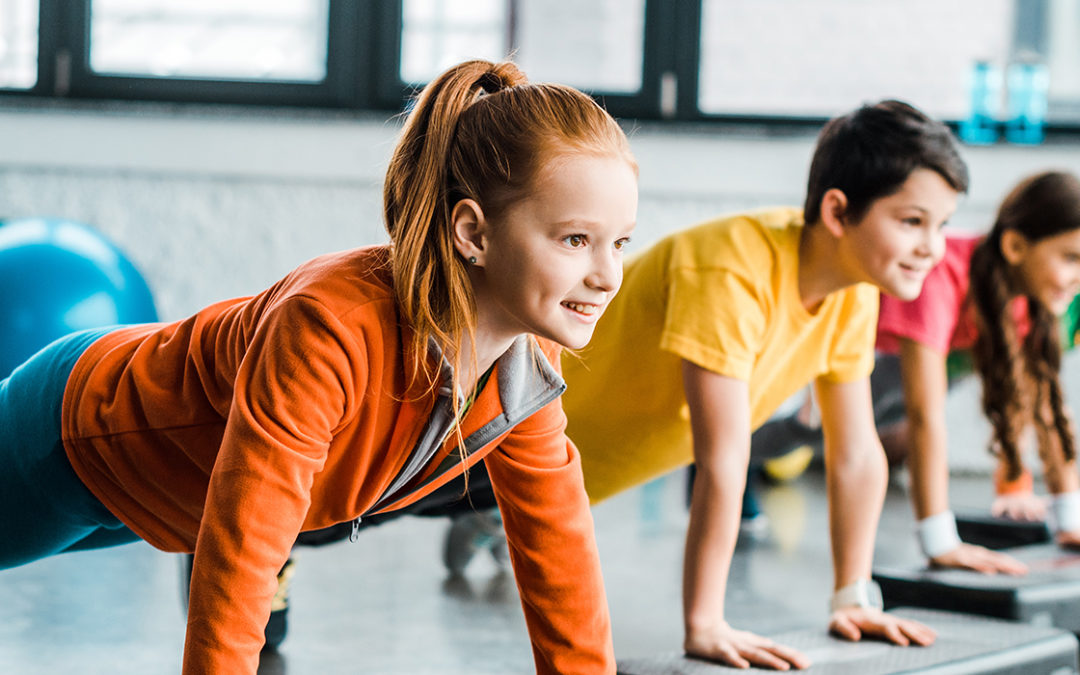There is strong evidence which shows exercise is an important key to reducing our risk of major illnesses such as heart disease, stroke, diabetes, and cancer.
Research also shows that regular physical activity can boost our self-esteem, mood, and sleep quality, making us less prone to stress, depression, and dementia. But because of our modern lifestyles and an increasing reliance on technology, we are less active nowadays, both as adults and as children.
Research indicates that inactive children are likely to become inactive adults, putting young people at risk of developing lifethreatening conditions such as heart disease and cancer. This is why it’s important to encourage exercise and keeping fit from a young age.
BENEFITS OF EXERCISE FOR YOUNG PEOPLE
Regular exercise has lots of health benefits for children and young people, such as:
- improving fitness
- providing an opportunity to socialise
- increasing concentration
- improving academic scores
- building a stronger heart, bones and healthier muscles
- encouraging healthy growth and development
- improving self-esteem
- improving posture and balance
- lowering stress
- encouraging a better night’s sleep
KEEPING IT FUN
It’s important to encourage your child and find activities they enjoy. This way your child will not find the exercise a chore and they are more likely to stick at it. The type of activity depends on the individual.
So, exercise can be team-led such as football or basketball, joining a club or having lessons such as tennis, dance or golf, or activities with family and friends such as a bike ride, going for a walk or swimming.
CHILDREN UNDER FIVE WHO ARE NOT YET WALKING
- Activity from an early age should be encouraged as it benefits a child’s development. It enhances and promotes the development of motor skills, bones and muscles, cognitive and social skills. Physical activity is any movement at this age. Examples are:
- Floor-based play in different positions – this could include ‘tummy time’, rolling, or reaching for toys.
- Water-based activities.
- Consider the environment to stimulate movement experiences.
You should ensure there is a good balance of activity and rest, so minimise long periods of time in the same position such as time strapped into car seats or carriers, and time spent in front of a TV or other screens.
CHILDREN UNDER FIVE WHO ARE WALKING BY THEMSELVES
Your child should be active for at least a total of 180 minutes (three hours) a day. This does not have to be all at once so their physical activity can be spread throughout the day.
Physical activity can be unstructured active play or structured exercise of varying intensities. Movement skills gained at this young age set the scene for movement skills such as balance and co-ordination when older. Examples are:
- Running or playing in the park.
- Throwing and catching games.
- Climbing or obstacle courses.
- Using a scooter.
- Walking to and from the shops.
- Trampolining.
- Children this age should not be inactive for long periods of time, except for when they are asleep. So, minimise time spent watching TV or on computer games, or time spent in a push chair. CHILDREN AND YOUNG PEOPLE 5-18 YEARS Children and young people in this age bracket should take part in moderate to vigorous physical activities for at least 60 minutes (one hour) every day, and this can be up to several hours. Moderate intensity activity means working hard enough to raise your heartbeat, so you breathe harder and begin to sweat, but are still able to talk. Examples are:
- Bike riding.
- Briskly walking the dog.
- Playing frisbee in the park.
- Martial arts.
Vigorous intensity activity means that your heart rate and breathing are harder and faster but talking is more difficult. Examples are:
- Running.
- Roller-skating.
- Swimming.
- Playing a sport.
Your child should be doing higher intensity and resistance activities three days a week, as these will help to strengthen muscles and bones. Examples are:
- Gymnastics.
- Tennis.
- Skipping.
- Climbing playground equipment.
- Body resistance exercises, such as sit-ups and pushups.
Children and young people of all ages should avoid spending long periods sitting down without moving. They should minimise time spent using computers or watching TV, and take regular breaks from studying.
POINTS TO REMEMBER
Whatever the activity or exercise, make sure your child is using appropriate protective equipment, including footwear, and think about safety to minimise their risks of injury.
Consider any medical conditions that might affect their ability or safety when participating in their chosen activity, and always consult medical specialist advice where appropriate. Young people can include weights as part of resistance exercising, but they should be supervised by a trained adult to ensure they are using the safe, age-appropriate and correct technique, and to avoid injuries to their growing muscles and joints.

